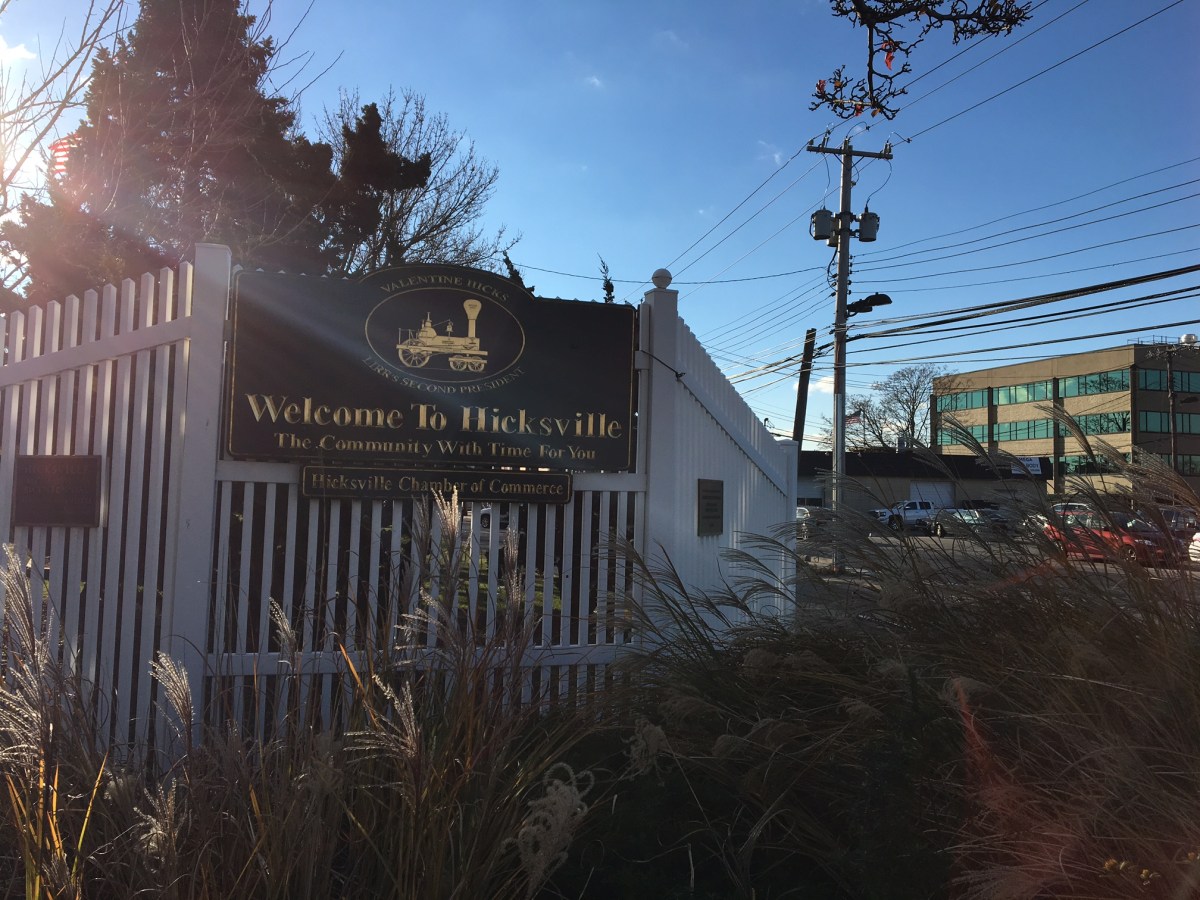The gymnasium was packed at Hicksville High School last month when a new plan to rezone the central business district and create a transit-oriented hub was presented. With multi-family housing, office space and retail included, the proposal was pretty straightforward, but sizeable challenges loom ahead, as they always do with something as ambitious as this design.
Will Hicksville finally reinvent itself this time? Or will this effort also end up gathering dust on a shelf like so many other previous attempts to revitalize this area?
Elected officials from the Town of Oyster Bay were on hand as were staffers from Vision Long Island, a nonprofit group that specializes in “grass-roots-style” community planning, which had helped to craft the original Hicksville Downtown Revitalization Action Plan four years ago with input from civic groups and local businesses. One of the goals of the rezoning is to allow 500 multifamily housing units and high-rise offices to be built around the LIRR’s Hicksville station, which is about to undergo a $121 million makeover.
Hicksville’s total area slated for transformation is 162 acres. The proposed zoning changes would span two distinct districts. The first, designated CB1, is what the Hauppauge-based Cashin Spinelli & Ferretti, LLC, planning consultants call a “traditional downtown district,” which would include mixed-use development of storefronts and rental housing. The second, CB2, would be a “transit-district” for hospitals, large offices and the like, with the intention of creating a new regional employment hub. The planners propose raising the maximum allowable density from 16 units per acre to 30 units.
But given the scandals that have rocked the Town of Oyster Bay recently, how confident can we be that these public officials can pull off a project of this size? Consider the threat of municipal bankruptcy from the town’s junk bond status, reports of insider deals corrupting the town’s planning department, and the arrest of Supervisor John Venditto in October on federal charges of receiving “bribes and kickbacks” from a local businessman who is also accused of giving the wife of Nassau County Executive Ed Mangano a “no-show job.” The future of Oyster Bay looks murky indeed.
During the presentation, Vision Long Island’s Executive Director Eric Alexander calmly dealt with community concerns about the project’s impact on traffic, taxes and density. To this group, ensuring local control is the key to successful development. Alexander has honed their transit-oriented approach in incorporated villages across the Island, scoring wins in Patchogue, Mineola and Farmingdale.
But Hicksville is a rare example of Vision Long Island tackling an unincorporated hamlet, where a larger township has power over land-use decisions. So far, the Town of Oyster Bay is not only on board but actively engaged and they’re taking residents’ preferences into full consideration, especially their concerns that the height of new buildings be capped at four stories.
Town Councilwoman Rebecca Alesia, a Republican committee leader, has supported revitalization efforts in this area since taking office in 2010. She believes the time is right, citing the Long Island Rail Road’s third track project on the mainline in Nassau, the improvements proposed for the Broadway Mall near the Hicksville train station and the pending redevelopment of the Sears’ property nearby on North Broadway that could bring hundreds of housing units and new retail stores.
“A lot has to do with the climate with other things going on the area,” Alesia told the Press. “Once you get the momentum, you want the wind on your back.”
Last year, Alesia ran for re-election on a platform that promised to uphold the township’s commitment to suburbia.
“Like with any rezoning, people can have a hard time with change,” she said at the recent presentation. “It’s important to educate how this process will work, and how it will balance our suburban lifestyle.”
Noting community concerns about traffic congestion and the lack of parking, she said that the third track project may include 950 additional spaces and that peak-hour auto usage should not rise too much from the proposed residential units. And she pointed out that efforts are already underway with the state Department of Transportation to address the daily commuter headaches of Routes 106 and 107 where some 58,000 vehicles converge.
She didn’t think the town’s political turmoil would hinder the Hicksville project.
“The town has a pretty good track record with following community preferences,” she said, citing the pending mixed-use redevelopment at the long-vacant Cerro Wire property which is finally underway. “Government is a lot more than one or two individuals.”
While Vision Long Island, the Town of Oyster Bay and the planning consultants keep plugging away, it’s important all involved avoid the common pitfalls typically associated with this type of transit-oriented growth. Namely, the prices of any new residential development in Hicksville should stay in sync with the region’s market needs, not drive profits for the real estate development community. After all, if millennials can’t afford the rent, why bother?
Although supporters of this project argue that transit-oriented growth reduces automobile traffic, past performance finds that claim to be a bit shaky. Often, transit-oriented developers insist that it won’t be an issue, but that’s simply not the case given commuter trends in Nassau and Suffolk counties. It’s imperative for both Oyster Bay and Vision Long Island to push their developer partners to incentivize transit usage for residents beyond mere encouragement. Subsidies, fare, or rent reduction programs would go a long way toward alleviating some of the traffic impacts these projects will eventually generate.
Thanks to Hicksville’s being an actual transit hub that residents not only use—reportedly 14,000 LIRR riders a day get on board there—but want to use more, the Town of Oyster Bay has the opportunity to restore confidence in government and create a new regional epicenter. With data-driven planning, planners, politicians and builders might actually succeed – but the vultures of the real estate industry are already circling overhead, waiting for this ambitious project to fail.
Can Hicksville finally realize its potential? Time will tell.
Rich Murdocco writes about Long Island’s land use and real estate development issues. He received his Master’s in Public Policy at Stony Brook University, where he studied regional planning under Dr. Lee Koppelman, Long Island’s esteemed master planner. More of his views can be found on TheFoggiestIdea.org or follow him on Twitter @TheFoggiestIdea.































